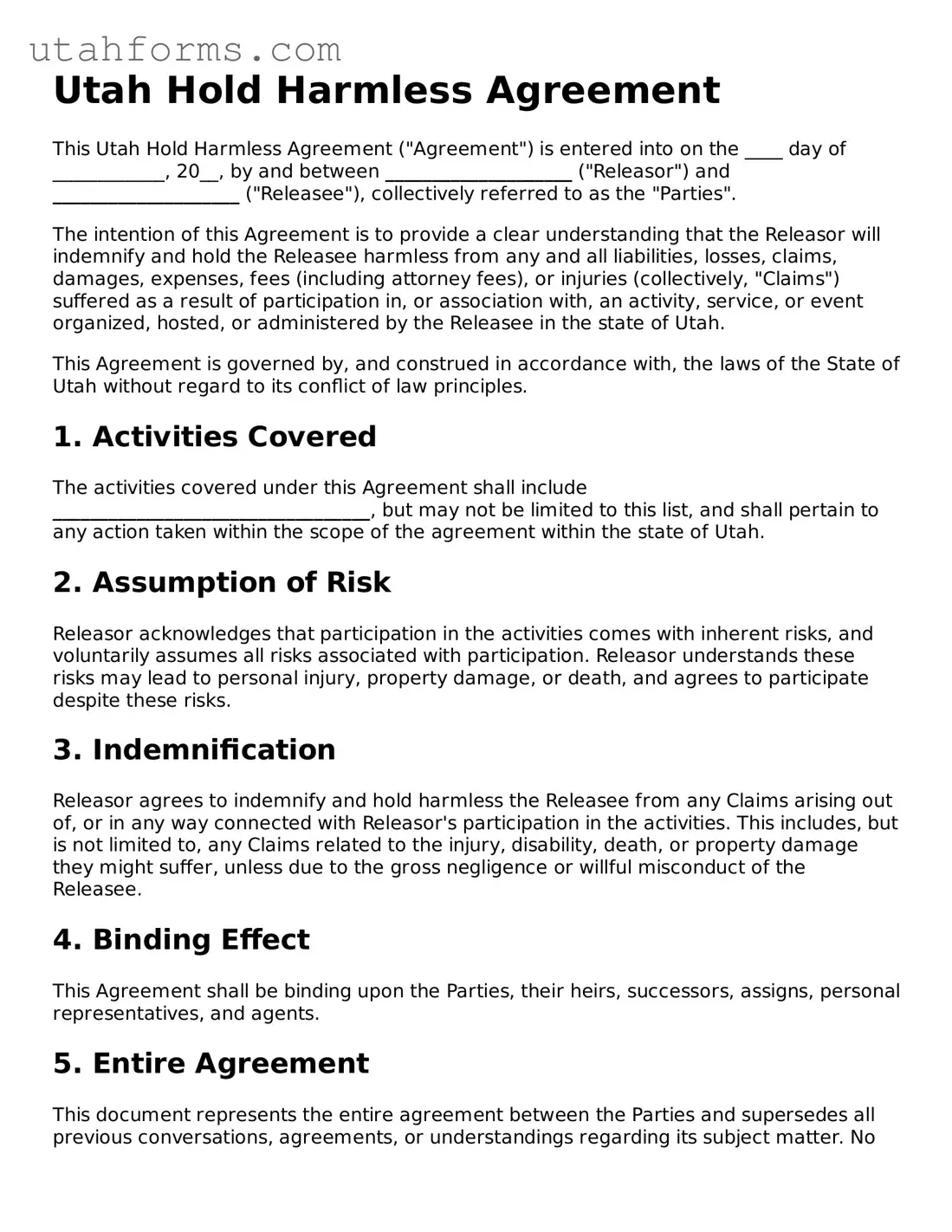Utah Hold Harmless Agreement
This Utah Hold Harmless Agreement ("Agreement") is entered into on the ____ day of ____________, 20__, by and between ____________________ ("Releasor") and ____________________ ("Releasee"), collectively referred to as the "Parties".
The intention of this Agreement is to provide a clear understanding that the Releasor will indemnify and hold the Releasee harmless from any and all liabilities, losses, claims, damages, expenses, fees (including attorney fees), or injuries (collectively, "Claims") suffered as a result of participation in, or association with, an activity, service, or event organized, hosted, or administered by the Releasee in the state of Utah.
This Agreement is governed by, and construed in accordance with, the laws of the State of Utah without regard to its conflict of law principles.
1. Activities Covered
The activities covered under this Agreement shall include __________________________________, but may not be limited to this list, and shall pertain to any action taken within the scope of the agreement within the state of Utah.
2. Assumption of Risk
Releasor acknowledges that participation in the activities comes with inherent risks, and voluntarily assumes all risks associated with participation. Releasor understands these risks may lead to personal injury, property damage, or death, and agrees to participate despite these risks.
3. Indemnification
Releasor agrees to indemnify and hold harmless the Releasee from any Claims arising out of, or in any way connected with Releasor's participation in the activities. This includes, but is not limited to, any Claims related to the injury, disability, death, or property damage they might suffer, unless due to the gross negligence or willful misconduct of the Releasee.
4. Binding Effect
This Agreement shall be binding upon the Parties, their heirs, successors, assigns, personal representatives, and agents.
5. Entire Agreement
This document represents the entire agreement between the Parties and supersedes all previous conversations, agreements, or understandings regarding its subject matter. No amendment, alteration, or variation of this agreement shall be valid unless it is in writing and signed by both Parties.
6. Severability
If any provision of this Agreement is found to be invalid or unenforceable, the remaining provisions shall remain in full force and effect.
7. Acknowledgment
By signing below, the Releasor acknowledges they have read this Agreement, understand its terms, recognize its legal implications, and agree to it voluntarily.
Releasor Signature: ____________________ Date: ____/____/20__
Releasee Signature: ____________________ Date: ____/____/20__
